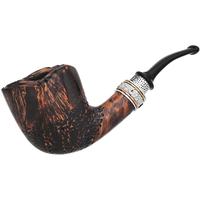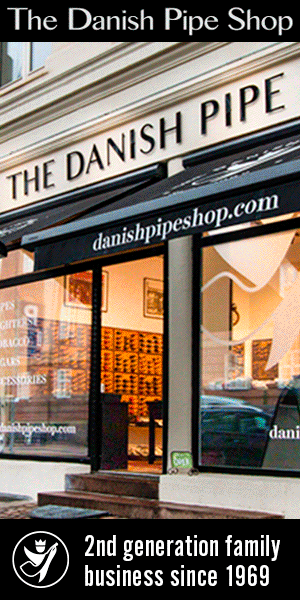Briar's Provence- Important?
- Thread starter milk
- Start date
You are using an out of date browser. It may not display this or other websites correctly.
You should upgrade or use an alternative browser.
You should upgrade or use an alternative browser.
That's as good a take-home as anything here.
I’ve been oil quenching pipes for years, I load one up with super value black cavendish and puff until I can’t even touch the stummel it’s so hot, then I dunk it in a bucket of carbon rich oil. Used diesel engine oil seems to work the best. The carbon imparted into the bowl as the pipe rapidly cools promotes cake formation and speeds up break in.
This is undoubtedly factual, it is after all on the internet now.
Wait… what were we talking about?
This is undoubtedly factual, it is after all on the internet now.
Wait… what were we talking about?
Beauty is in the eye of the beholder
They aren’t as beautiful as old Lees, which in turn weren’t as beautiful as Pre War high grade Kaywoodies.
View attachment 202899
If I study them close, neither Kaywoodie, nor Lee, or a Marxman were varnished. The Algerian briar didn’t take as high polish as the others.
Oil curing is an additional curing made by the maker before carving. The entire idea of the extra production step is to improve the smoking quality of the finished pipe.Ashton, Randy Wiley, Lee Erck, Radice did and still occasionally do. I've done it, it's not big deal. I've had a Wiley, an unsmoked 42 Shell, a Radice, and an Ashton. The Wiley tasted.... slightly.... fresh. The rest tasted like pipes.
My issue doesn't revolve around who oil cures or what it does. My issue revolves around unsubstantiated/incorrect claims about what oil curing is, how it works, when it's done, and what we should believe about the pipes of yesteryear.
From Pipedia:
——-
Curing - Pipedia
Dunhill led the way in developing a whole new curing system- a system that many people from around the world swear was and is the best in the world. From 1918 onward Dunhill pipes were steeped in a bath of vegetable oil or oils, and then placed on brass heat pegs which stood over heated gas jets. The heat was controlled so that, over a period of weeks the oil would exude from the bowl bringing with it sap, resins, and other impurities. This “exudite” was periodically wiped from the surface of the pipe bowl before it could harden into an impervious coating. In a manner of weeks the pipe was cured. But this type of curing is different than air curing; the flavor caused by the curing is different. Nutty, say some; oily, say others. Advocates of this system feel that the fibers in the wood are somehow changed, made more durable and able to withstand higher temperatures than an air cured or kiln cured pipe.
———
It’s not magical, but it’s a century old process.
The basic idea was to speed up the curing process. Sasieni took it a step further.Oil curing is an additional curing made by the maker before carving. The entire idea of the extra production step is to improve the smoking quality of the finished pipe.
Not everybody was a fan. Both Barling and Comoy's let the block season for a while before shaping and seasoned them more before before finishing. Barling went so far as to declare oil curing inferior to air curing.Dunhill led the way in developing a whole new curing system- a system that many people from around the world swear was and is the best in the world.
In the end, it really doesn't matter. If you like how your pipes smoke, it doesn't matter where the wood comes from or how it was cured. I have pipes from a number of different manufacturers, covering a period of of over 130 years, from different countries, using different methods, and what they all have in common is that I enjoy how they perform.
Better that than a Quixotic Squash.What can I say, I'm a Quixotic Sasquatch.
Another reason provenance matters is pride of ownership.
The same reason a poor boy delights in owning a genuine Belgian, and not Japanese made Browning Sweet Sixteen, long tang and round knob, pre salt era. Or an A.H. Fox made in Philadelphia, not Utica. Or a Hamilton 992B adjusted to six positions in Lancaster, not Switzerland.
When the Algerian War of Independence began in 1954, Bob Marx called it a day and sold out to Mastercraft.
My Marxman pipes were made in New York City in the same place and time as 7 pointed gold inlaid star Star Grade Lees and four hole stinger Kaywoodies, and made of Algerian briar, the same as Tracy Mincer Custombuilts:
—-
According to an important employee, Hetzer Hartsock, "Tracy used a very choice Algerian briar, and they were bigger blocks than what the other companies were using."
I should note that prior to WW II and then again up to the early 1960s, Algerian briar was readily available to the pipe-making houses. The Barclay Rex store, located in Manhattan, imported many bags of very large blocks of Algerian for use in the making of their in-store house brand.
——-
If Bob Marx allowed his brand stamped on it, it’s the real coin, and made right, of good stuff, when all small change above a nickel was made, of real silver.
View attachment 203057View attachment 203058
View attachment 203059View attachment 203060
The same reason a poor boy delights in owning a genuine Belgian, and not Japanese made Browning Sweet Sixteen, long tang and round knob, pre salt era. Or an A.H. Fox made in Philadelphia, not Utica. Or a Hamilton 992B adjusted to six positions in Lancaster, not Switzerland.
When the Algerian War of Independence began in 1954, Bob Marx called it a day and sold out to Mastercraft.
My Marxman pipes were made in New York City in the same place and time as 7 pointed gold inlaid star Star Grade Lees and four hole stinger Kaywoodies, and made of Algerian briar, the same as Tracy Mincer Custombuilts:
—-
According to an important employee, Hetzer Hartsock, "Tracy used a very choice Algerian briar, and they were bigger blocks than what the other companies were using."
I should note that prior to WW II and then again up to the early 1960s, Algerian briar was readily available to the pipe-making houses. The Barclay Rex store, located in Manhattan, imported many bags of very large blocks of Algerian for use in the making of their in-store house brand.
——-
If Bob Marx allowed his brand stamped on it, it’s the real coin, and made right, of good stuff, when all small change above a nickel was made, of real silver.
View attachment 203057View attachment 203058
View attachment 203059View attachment 203060













